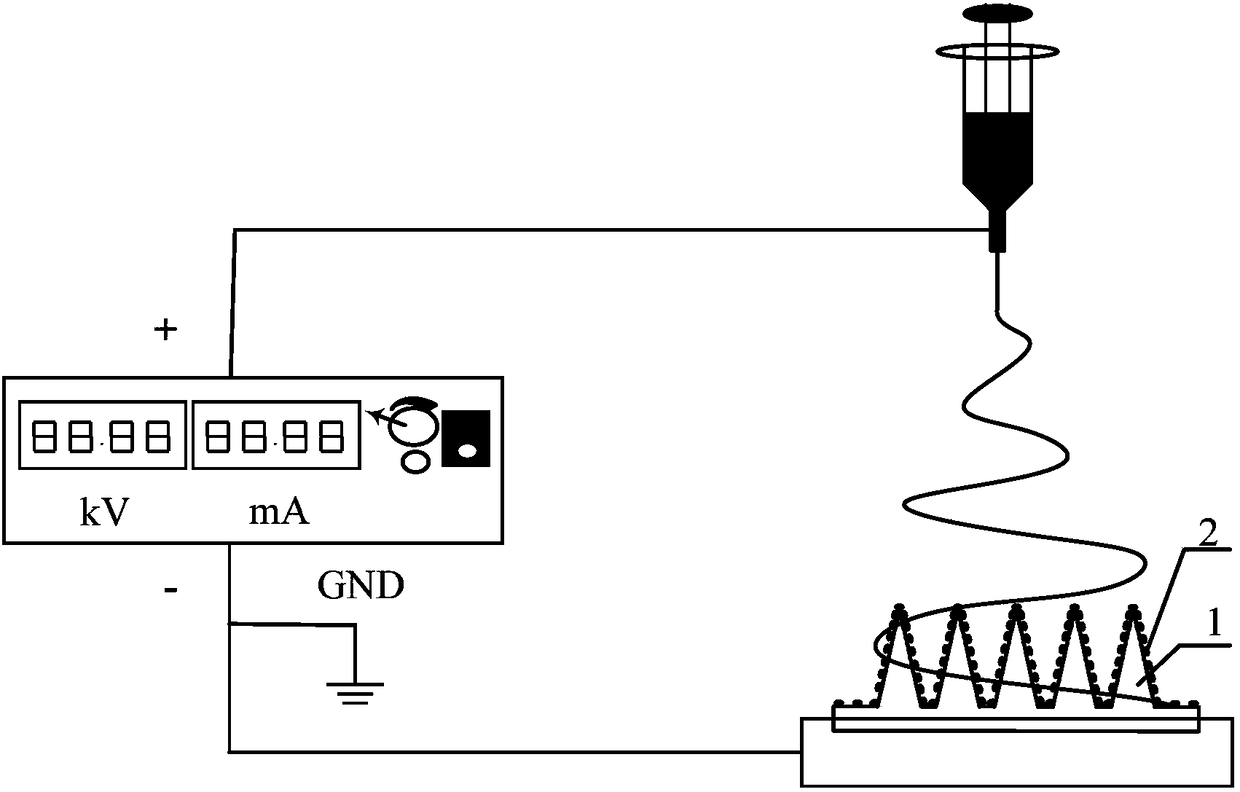Preparation method of microneedle array biosensor
A technology of biosensors and microneedle arrays, applied in sensors, medical science, blood characterization devices, etc., can solve the problems of polymer microneedle arrays not being strong enough, easily causing infection, and wounds that cannot heal within minutes. Realize the effect of maximum utilization rate and simple preparation process
- Summary
- Abstract
- Description
- Claims
- Application Information
AI Technical Summary
Problems solved by technology
Method used
Image
Examples
Embodiment 1
[0022] like figure 1 As shown, the microneedle array biosensor includes a microneedle array 1, a biorecognition molecule 2 modified on the surface of the microneedle array 1, and a sprayed degradable polymer material 3. The microneedle array biosensor in Example 1 is used for glucose in body detection. The specific preparation method is as follows:
[0023] a. Preparation of microneedle array 1: Laser drilling is used to prepare a microneedle array mold, and a gradient rough surface is formed on the inner cavity of the microneedle array mold during the process of preparing the microneedle array mold; the liquefied, conductive The microneedle array material is poured in the microneedle array mould, and demolded to form a conductive microneedle array, the material of the microneedle array mold is an aluminum sheet, the laser drilling speed is set to 200mm / s, and the number of times of drilling is set to At 1200 times, under the above setting conditions, the aluminum sheet perf...
Embodiment 2
[0028] The difference between this embodiment 2 and the foregoing embodiment 1 is that the microneedle array biosensor of this embodiment 2 is used for in vivo detection of cholesterol. The enzyme molecule selected in step b is 50 uL of cholesterol oxidase at 10 mg / ml. Like Example 1, the enzyme molecule is also modified on the surface of the microneedle array 1 by a chemical cross-linking method, and the selected chemical cross-linking agent is still glutaraldehyde. The choice of 10mg / ml cholesterol oxidase is the optimal concentration obtained after parameter optimization of its concentration, and at this concentration, the microneedle array biosensor has the maximum response. The selected concentration of glutaraldehyde is 0.2%, soaked in the environment of 4 ℃ for 4 hours, and cross-linking for 4 hours is the best time for experimental optimization. When cross-linking for 4 hours, cholesterol oxidase can be immobilized on the microneedle array organism with maximum efficie...
PUM
 Login to View More
Login to View More Abstract
Description
Claims
Application Information
 Login to View More
Login to View More - R&D
- Intellectual Property
- Life Sciences
- Materials
- Tech Scout
- Unparalleled Data Quality
- Higher Quality Content
- 60% Fewer Hallucinations
Browse by: Latest US Patents, China's latest patents, Technical Efficacy Thesaurus, Application Domain, Technology Topic, Popular Technical Reports.
© 2025 PatSnap. All rights reserved.Legal|Privacy policy|Modern Slavery Act Transparency Statement|Sitemap|About US| Contact US: help@patsnap.com


